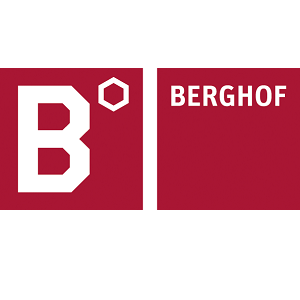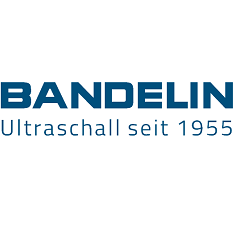These lessons and friendships are excellent opportunities to emphasize the value of racial and cultural diversity. Aside from being developmentally able to put cultural and racial differences into perspective, they also can learn to appreciate traits that make others different from themselves. Here is what you need to know about teaching your kids about race and cultural diversity. In today’s highly diverse organizations, the ability to work with people having diverse values What do German women look like and cultures is extremely important.
Address any stereotypes and prejudice by stressing mutual benefits and understanding. Ensure that learners are clear about the common purpose and their roles in the group, before moving on to perform flexibly together to achieve the task or a goal. Ask your learners to design a one-day outdoor activity or a collaborative task with students from other courses.
Continuing https://www.alexelectric.net/tijuana-hooey-womens-black-serape-hoodie-sweatshirt-hh1167bkaz/ Education programs often help professionals learn more about how to effectively deal with cultural diversity and inclusion or multiculturalism. Once a professional relationship begins to form, some clients are willing to discuss their culture and belief systems, especially if you have expressed interest in learning about them.
- Differences can lead to increased resistance to leadership and change because others might not understand and trust you.
- Studies have shown that the quality of research increases when performed by diverse groups, as different life experiences add valuable perspectives to research projects.
- In handyman services Delaware, employees are involved as well as our clients in reaching our goal that is to provide the best handyman service.
- This case study demonstrates the significant impact of culture on well-intentioned and scientifically-based interventions meant to improve community health and well-being.
It teaches people how to interact, work and grow from those who grew up differently. Spurred by a growing social consciousness, businesses are slowing making a more concerted effort to improve diversity and inclusion in the workplace. Treat people in a way they wish to be treated rather than the way you wish to be treated. Common social activities and practices that are comfortable for you may not be comfortable for everyone. Do not tell offensive jokes that may alienate those who are different from you — even if they are not present at the time.
Share This Book
All these phenomena can affect an individual’s perspective on the world, how they view others, their personal and social expectations, mannerisms, language, and more. For example, a client who is constantly dipping below the poverty line will have problems and face decisions that more economically-secure clients may never face. Understanding the reality of a client’s life will help you to establish greater credibility and rapport. Maintaining an open mind by discarding preconceived notions you may have about people in various socioeconomic situations will help. An ethnocentric individual often judges other people and groups by comparing them to the culture that the person grew up in or favors. Fortunately, this type of bias can be moderated by increasing self-awareness, avoiding stereotypes, and being open minded, all of which help a person to step out of their cultural box and see people as individuals instead.
These challenges forced diverse employees to hone their expertise and develop excellent problem solving skills. Inclusion means that everyone in the diverse mix feels involved, valued, respected, treated fairly, and embedded in your culture. Empowering all employees and recognizing their special talents is part of creating an inclusive company. In this brief paper we intend to highlight how the client-therapist relationship is particularly important in multicultural therapy and how each of these three dimensions of the relationship is relevant to it. We also discuss important therapist factors, such as knowledge, attitudes, and skills that foster the development and strengthening of the relationship. This paper is a continuation of a fruitful round-table discussion that the authors held at a recent APA conference. We have organized the content below in terms of the questions that were raised and discussed with the participants.
After all, they might have experience in that area and could make helpful suggestions. It may seem as though these encounters are uncomfortable at first, but the reason for doing an internship is to gain knowledge. Part of that process involves finding one’s own strengths and weaknesses so that you can maximize the former and minimize the latter. In highly affective cultures, people tend to openly express their feelings. In highly neutral cultures, emotions are not expressed as openly and naturally. People from highly affective cultures are more likely to smile, talk loudly when excited, and greet each other enthusiastically.
Children’s art, play, and dramatics are a few of the ways that children can be who they need to be and communicate with others. Adults can learn children’s histories through children’s artwork, play, and dramatics. The moderating role of diversity climate in the team diversity–interpersonal aggression relationship. Diversity climate is positively related to Inclusion, mediated by trust and openness in workgroup communication.
Celebrating Diversity in Relationships this Valentine’s Day
The implications of differing emphases on past, present and future may be most apparent in planning. North American managers primarily focus on achieving results within five years.
This also serves to promote inclusion as tiered groups may span ages, grades, and other barriers that could prohibit this group of students from otherwise learning together. With targeted interventions, inclusivity comes in all students’ access to the help they need in the areas they need it. An inclusive school culture allows all community voices to be heard so that https://obnovamotorjev.si/uncategorized-sl/sri-lankan-women/ community members feel value and included. From a global perspective, up to 80% of research participants can be described by the “WEIRD” acronym — white, educated, and from industrialized, rich, and democratic societies.
Activities outside the classroom
As an extension of not stereotyping any group, also don’t think of any individual person in terms of group characteristics. People are individuals first, members of a group second, and any given generalization simply may not apply to an individual. Be open minded and treat everyone with respect as an individual with their own ideas, attitudes, and preferences. Again, there is no “right” answer, and an awareness of differences is normal and natural even if it may cause some discomfort at first.
In essence, create a clear understanding of cultural competence in your organization. Discuss, in your organization, the current diversity issue, and appropriate diversity training to address it. Explain the benefits of diversity training for all the people at your organization, including your team members and other leaders in your organization. Allow learners to be out of their comfort zone while at the same time maintaining an atmosphere of psychological safety. Diversity training needs to allow people to discuss conflictive topics, but at the same time, they need to feel that environment is supportive and appreciative of the disclosure.





















